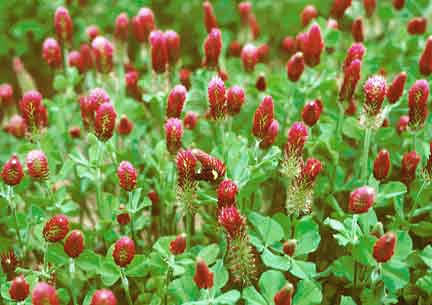Forage legumes are used throughout the world because of their high nutritive value and ability to use atmospheric nitrogen when infected by the proper rhizobia strain. Legumes were a critical part of U.S. farming and pasture systems before the advent of low-cost nitrogen fertilizer after World War II. Manufacturing of nitrogen fertilizer, based on technology for developing explosives for World War I and II, requires natural gas. When energy sources such as oil and natural gas become limiting, prices escalate. For example, during the energy crisis of 1974, the cost of nitrogen fertilizer increased from about 8¢ to over 30¢/lb of nitrogen. We appear to be on the verge of another energy crisis that will raise nitrogen fertilizer prices further. When managed properly, legumes can be used as an alternative to nitrogen fertilizer.
Agricultural producers in Australia, New Zealand, and most South American countries have always depended on legumes because the low prices received for their grain and livestock prohibited the use of nitrogen fertilizer. Although profit is a goal of some U.S. livestock producers, other goals include property preservation, lifestyle, and recreation. Therefore, in many instances, there is not the economic pressure to be an efficient low-cost producer.
University animal scientists tell us the beef cattle industry is changing rapidly with vertical integration and branded meat products. As more branded beef products come on the market, quality assurance will be of utmost importance. Packers may some day only buy cattle that are source verified. If this trend continues, only livestock producers willing to manage their cattle and pastures under certain prescribed conditions will survive. Recreational or hobby ranchers may be eliminated because there will be little or no demand for their calves.
Most of the present livestock producers in the southeastern U.S. do not have experience growing forage legumes. In contrast, legumes are found on every farm in the Midwest where alfalfa has been grown for three to four generations of producers. Expanded use of forage legumes in the southeast is limited by this lack of experience and knowledge. Information presented in this publication is considered to be the current state of knowledge on establishing, managing, and utilizing forage legumes in southeastern US. It has been written for agricultural producers in hopes that it will expand the use of forage legumes and enhance the benefits from their use.
Next: Need for Legumes
